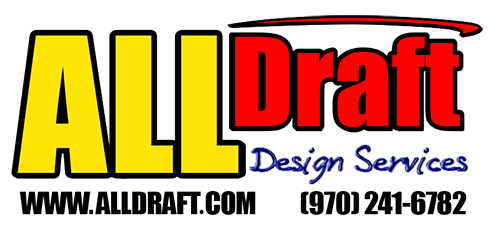drafting and design involves the creation of drawings and models used to build structures. In other words, drafting addresses everything within a building and leaves exterior design concerns to others. The plan that is drafted by the architect is usually in the ratio of the actual structure. For example, many building plans are made in the ratio 1:10. The plan gives the civil engineer an idea about the structure, who actually executes the process of construction. floor plans are the starting point for all drafting. The initial layout begins with developing preliminary sketches to display to the client for comment and/or approval. Floor plans will contain notes and callouts explaining specific materials or construction concerns that need to be brought to the builder’s attention. After a gradual evolution, art of drafting and designing came into being. The disciplines of architecture, civil engineering and construction were hence differentiated.
drafting are made according to a set of conventions, which include particular views (floor plan, section etc.), sheet sizes, units  of measurement and scales, annotation and cross referencing. Conventionally, drawings were made in ink on paper or a similar material, and any copies required had to be laboriously made by hand. While creating a basic design, the mathematical as well as the scientific theories are put to use. Drafting can be used to create drawings of circuitry or mechanical designs. A draftsman’s CADD drawings include technical details and specifications, such as materials, dimensions, and procedures. It is common practice to draft floor plans at a scale where the entire building can -hopefully- be displayed on a single page so that overall dimensions are easy to see, and then to create larger “blow-up” plans of areas that are information intensive, such as restrooms or stairwells.
of measurement and scales, annotation and cross referencing. Conventionally, drawings were made in ink on paper or a similar material, and any copies required had to be laboriously made by hand. While creating a basic design, the mathematical as well as the scientific theories are put to use. Drafting can be used to create drawings of circuitry or mechanical designs. A draftsman’s CADD drawings include technical details and specifications, such as materials, dimensions, and procedures. It is common practice to draft floor plans at a scale where the entire building can -hopefully- be displayed on a single page so that overall dimensions are easy to see, and then to create larger “blow-up” plans of areas that are information intensive, such as restrooms or stairwells.
These concepts are used to make the building more compact and beautiful. They are also used to provide the building with maximum possible facilities. drawings are drawn to scale, so that relative sizes are correctly represented. The scale is chosen both to ensure the whole building will fit on the chosen sheet size, and to show the required amount of detail. At the scale of one eighth of an inch to one foot (1:96) or the metric equivalent 1 to 100, walls are typically shown as simple outlines corresponding to the overall thickness.
Modern day computer softwares give so much freedom and flexibility to drafting services that even very complex structures can be designed efficiently and without any errors. 3D CAD Modeling is a great tool in the arsenal of drafting services. It’s much easier for the designers to design efficient, aesthetically superior buildings using this latest modeling technique. drafting services require costly CAD software as well as technical and administrative staff. When you outsource drafting services like Alldraft.com, you save yourself the headache of acquiring this software’s and hiring the costly technical and administrative staff.
Outsourcing these services boosts the overall productivity of an organization since there is a reduction in time spent in drafting and hence a subsequent reduction in cost incurred in that process.

